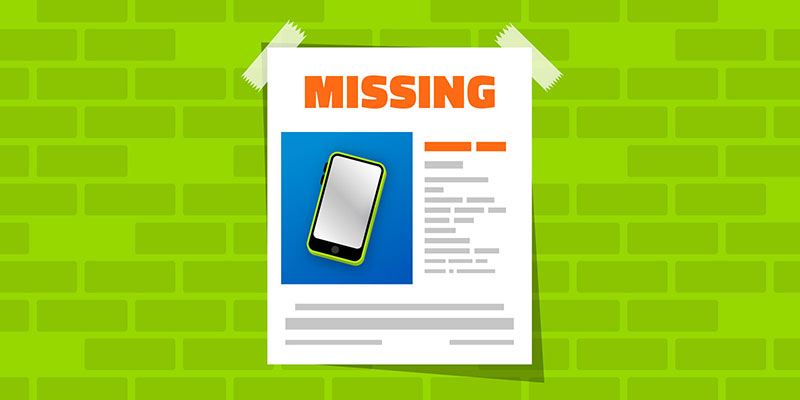It’s a nightmare, it’s inconvenient, and it’s inevitable. Losing or having your smart device stolen poses a significant, looming privacy risk— we just don’t like to think about it. However, this is an instance where hiding your head in the sand will only make you more susceptible to attack.
The personal data living on your family’s network of devices is valuable and often-times all too vulnerable. Having a worst-case-scenario plan in case of device loss or theft could save you time, money, and heartache.
So, we’ve put together a list of best practices in case the worst does happen, you’ll be prepared to prevent an identity theft disaster.
General Best Practices
Preparing yourself and your devices before they are stolen is the fastest way to avert potential breaches. Consider:
- Keeping a “Find My” app turned on for all devices. This is the best way to locate and remote wipe devices.
- Making sure your devices are secured behind individualized pin codes, fingerprints, or Face ID. This will slow down thieves trying to access your device.
- Use strong, individualized passwords on all accounts, including email and banking apps. Don’t have the time? Use a trusted password manager to automate password creation. This will help limit the scope of any breach.
- When a device is stolen, act quickly. The faster you respond, the more effective the following steps are likely to be. If the thief turns the device off, or removes the battery, you’ll be unable to remotely wipe the device.
Learn how to get automatic protection over any network, even unsecured WiFi.
Android Devices
Here is what Android users should do in case of device theft.
- First, locate your device. Go to android.com/find and sign into your Google Account.
- If you have more than one device, choose the one you’re looking for from the list at the top of the screen. The lost/stolen device will receive a notification, so you should act quickly.
- On the map on your screen, you’ll be shown information about the phone’s location. Remember this is approximate and might not be neither precise nor accurate. If your phone can’t be found, you’ll see its last known location (if available).
- Now, if you’re certain your device has been stolen, you can click “Enable lock & erase” to erase your device. But be careful. After you erase your device, Find My Device will no longer work, so make sure you are certain.
- If you believe your phone is just lost, and not stolen, you have a few options. “Lock” will lock your phone with your PIN, pattern, or password. If you don’t have a lock in place, you can set one. To help someone return your phone to you, you can also add a message or phone number to the lock screen.
An important note: If you happen to find your phone after you have erased it, you’ll likely need your Google Account password to use it again.
iOS Devices
Here is what iOS users should do in case of device theft.
- Sign into icloud.com/find or use the Find My app on another Apple device.
- Next, you’ll need to locate your device. Select the one you’re searching for to view its location on a map.
- You’ll be presented with a few options here. “Mark As Lost” will remotely lock your device, allow you to display a custom message with your contact information on the missing device’s lock screen, and track the device’s location. If you have added Apple Pay payment options, the ability to make payments using Apple Pay on that device will be suspended for as long as the device is in Lost Mode.
- If you’re certain your device has been stolen, select “Erase your device.” When you erase your device remotely, all of your information is deleted, and you will no longer be able to locate it with the Find My app or Find iPhone on iCloud.com. Make sure your phone is not recoverable before taking this step.
Device Theft Wrap-Up
After you have protected your most sensitive information with the steps above, take just a few more steps to fully wrap the crisis up.
- Report your lost or stolen device to local law enforcement. Law enforcement might request the serial number of your device. This can often be found on the original packaging.
- Report your stolen device to your wireless carrier. They will disable your account to prevent calls, texts, and data use by the thief. If you have insurance through your carrier, this is the time to begin filing a claim as well.
- Reset all of your passwords, including your Google Account and Apple ID. After a device is stolen, you can never be certain of how far the breach has penetrated. The good news is, if you are using a secure password manager, this should be pretty quick!
- Any accounts that had 2FA access, when you first set up the account would have had you save the private key or one time code. This key will allow you back into your accounts without needing the device and will allow you to remove the account from the device.
- Alert your banking providers to the potential breach and monitor your bank accounts and credit cards for suspicious activity. If you see any, get ahead of the issue and cancel and replace all of your bank cards. This will prevent the financial breach from affecting multiple accounts.
A stolen device is a headache, but it doesn’t have to be a disaster. If you have a plan in place for a worst-case scenario, you’ll be able to act quickly and confidently. Do you have device theft tips that we missed here? Let us know on the Webroot Community.






